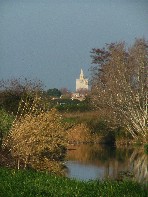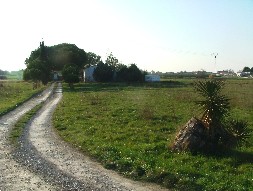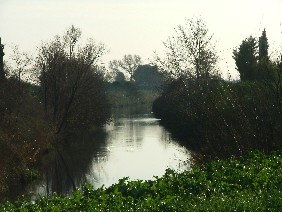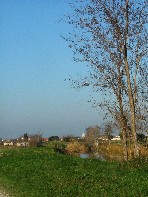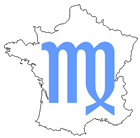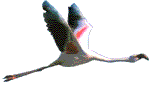 Lunel, the Hérault and the Gard
Lunel, the Hérault and the Gard

Flamingos over a nature reserve in the Hérault
Lunel is a town of about 25,000 people between the cities of Nîmes and Montpellier. We are on the very eastern edge of the Hérault département (equivalent of English county) and north as well as east of us is the département of the Gard in which we find many of the activities described elsewhere on this site. The nearest town there is mediaeval Sommières, a on the river Vidourle. This river is, however, one of the most notorious in France for flooding, and Sommières is flooded to a depth of some metres every 25 years or so, most recently in 2002. Lunel is often affected by the same floods though mostly to the east of our corner of town. The water accumulates quickly after heavy storms in the Cevennes hills to the north and eventually disperses in the flat open marshes and lakes of the petit Camargue between us and the sea about 13 km to the south.
So we are close to the rail and motorway corridors which run north-east to south-west across the Languedoc region, sandwiched between the Cevennes and the Camargue, a marvellous contrast between hills, and coastal flat-lands where you often see flamingos.
Like many of its neighbouring villages Lunel itself is notable for its bull-related festivals and culture. Here we have relatively little of the Spanish-style corrida in which the bulls are killed, but mostly the course camarguaise in which young men in white chase the bulls and attempt to grab trophies from the horns while avoiding being chased - either the bull or young men may win, and there are champions on both sides! The town is growing quite fast - we have heard that the population will soon reach 30,000. It has a small historic centre surrounded by more modern housing and by open countryside, with shopping centres along the main Route National 113 (N113). Our house is south-west of the centre, towards the edge of the built-up area on the way to the also fast-growing village of St Just.
By the canal south of Lunel. Click here for more photos of
the town centre.
Lunel was a port until 200 years ago or so. The Canal which ran north from Le Grau du Roi on the coast is still there right up to the southern outskirts of the town, but the final section in Lunel has been built over. However, the Parking du Canal on the western edge of the Town centre, built over the site of the old port, has a lovely little symbolic canal with fountains all the way down, and the walk or cycle ride into the countryside to the south along the bank of the canal is good. For a (French language) pdf about the canal, click here. (note that when it says Vous êtes ici it refers to a point, not far from where we live, where the canal-side walk begins)
Read the Wikipedia article on Lunel (in French).
It is described thus in the Cadogan Guide Languedoc-Roussillon (by Dana Faracos & Michael Pauls, 2006):
…a peculiar place… Legend has it that Lunel was founded by Jews from
Jericho… [but] historians now say that the first Jews probably settled in the
11th century and, until their expulsion in 1306, Lunel was their
educational centre in France, with well-known schools of everything form
medicine (pre-dating Montpellier’s) to the Kabbala.
Today the town raises steers for bloodless course libre bullfights.
Its landmark is a copy of the Statue of Liberty (erected in 1989 to
commemorate the bicentenary of the French Revolution), its cops wear
star-and-crescent badges just like those of New Orleans, and one of the biggest
businesses is dog food research and development
Little
remains of medieval Lunel: some bits of the Jewish schools on the Rue Ménard,
and a vaulted alley called the Passage des Caladons that was once part of a
Templar commandery. In the 19th
century Lunel was the holiday retreat of… Karl Marx [who] suffered from
asthma… whenever he had a bad bout his wife Jenny sent him down to the Château
de la Tour de Farges, owned by the husband of her best friend, opera diva
Caroline Ungher.
| One curious piece of information - people born and bred in Lunel are known as Pescalunes (referring to the legend of a man fishing in the Canal for the moon) and there is a modern sculpture/statue of the Pescalune in the centre of town - reproduced here. We shall never be Pecalunes of course - just Lunellois! Lunel was also the home for some years of the well-known French artist Jean Hugo, a descendant of Victor Hugo - there is a park named after JH and some works of art on buildings. You can find out more about this and much more on the Town website or Tourist office website. | 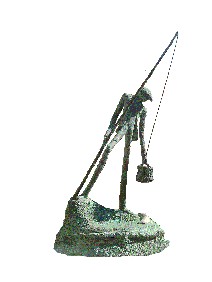 |
This is a good, diverse wine area and not far from the southern Rhône Valley – for more details visit our wine page.

